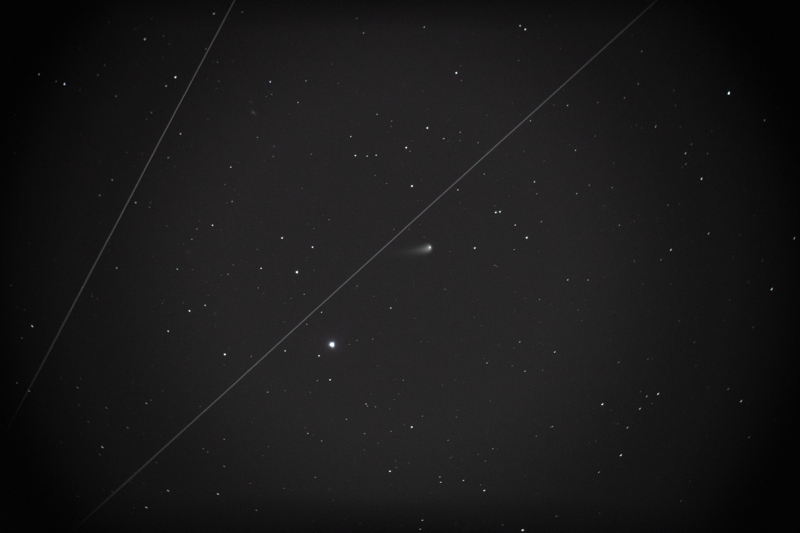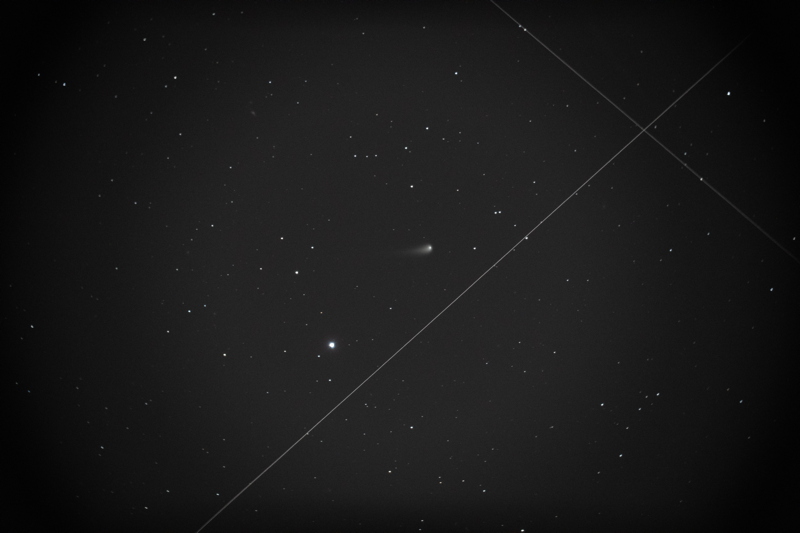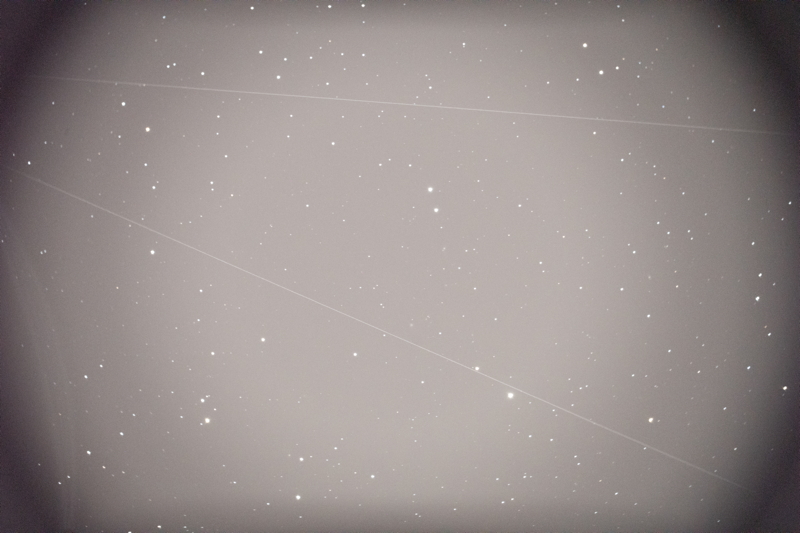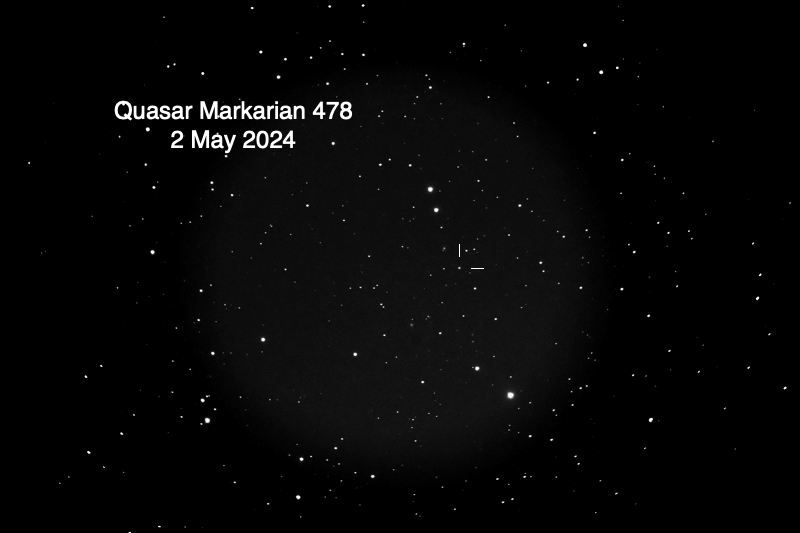Annoying Satellites, Comet Tsuchinshan-ATLAS, Quasars
Posted: 3 May 2024
Wednesday, 1 May 2024, was partly cloudy and windy. Thursday, 2 May, was clear with some breezes.
|
Open: Thursday, 2 May 2024, 1816 MST Temperature: 90°F |
Session: 1961 Conditions: Clear, breezy |
Equipment:
12" f/8 LX600 w/StarLock
2" 24mm UWA eyepiece
Focal Reducer
Camera:
iPhone 15 Pro Max
D850 DSLR
After opening the observatory, a baby bunny came to visit. Frame from iPhone 15 Pro Max video (5X lens).

1829 MST: Relaxed on the observatory patio bench.
1845 MST: Calm now.
I walked away from the observatory for this iPhone photo (0.5X lens, cropped).

iPhone 15 Pro Max video (5X lens) of the setting Sun.
Click to view video
1910 MST: Sunset.
1918 MST: LX600 ON, StarLock OFF, High Precision ON.
Viewed the Trapezium star cluster in M42 (Orion Nebula), 102X. The stars were visible, but the nebula was not visible in the bright twilight sky.
Prepared the D850 DSLR for imaging later.
1926-2002 MST: Relaxed on the bench to watch the stars come out.
After returning to the observatory I viewed M42 (Orion Nebula), 102X. Some nebulosity was now visible in the twilight sky.
2008 MST: Viewed Comet Tsuchinshan-ATLAS (C/2023 A3), 102X. The coma and a nice short tail were visible.
Mounted the D850 DSLR at prime focus + focal reducer, focused on the star Spica, SYNCed on Spica, and locked the telescope primary mirror.
2019 MST: StarLock ON.
This is a StarLock autoguided, prime focus + focal reducer, 1 minute, ISO 6400, image of Comet Tsuchinshan-ATLAS (cropped).

I took three more images of the comet, but satellites passed through the field-of-view, as seen in these unedited 1 minute images.



This satellite problem is going to get worse unless governments and businesses get control of what they put in orbit around the Earth. Currently, there are a few thousand visible satellites in orbit. However, there are plans for tens of thousands of satellites, potentially even 100,000 satellites. This will change the night sky appearance and result in seeing more satellites than stars and ruin ground-based astrophotography.
I then imaged two Quasars (maybe), StarLock autoguided, 5 minutes, ISO 6400. And yes, satellites photobombed two images. Identification of the Magnitude 17 Cloverleaf Quasar is questionable, although the size and shape of the object as shown in the inset seem correct.
Cloverleaf Quasar, H1413+117 ? (Mag. +17, 11 Billion Lightyears)

Quasar Markarian 478 (satellites)

Quasar Markarian 478 (Mag. +14.5, 1 Billion Lightyears)

2056 MST: StarLock OFF, High Precision OFF.
Observed NGC5248 (galaxy), 102X.
2109 MST: LX600 OFF.
2116 MST: Took a Sky Quality reading and reported the result to Globe at Night.
|
Close: Thursday, 2 May 2024, 2120 MST Temperature: 64°F |
Session Length: 3h 04m Conditions: Clear, SQM 20.98 |
Comments are welcome using Email. Please read the Email Etiquette guidance.
Cassiopeia Observatory Home Page
Copyright ©2024 Michael L. Weasner / mweasner@mac.com.
URL = http://www.weasner.com/co/Reports/2024/05/03/index.html
